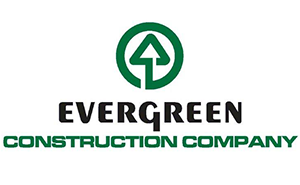Hello and welcome to the Housing Minute. My name is Stephanie Watkins-Cruz and I’m the Director of Housing Policy here at the North Carolina Housing Coalition. Today I wanted to talk to you a little bit about the debt ceiling agreement that was reached over the weekend between President Biden and Speaker Kevin McCarthy. The debt ceiling agreement lifts the debt ceiling or suspends it through January 1, 2025, and it also calls for capping FY24 spending at FY23 levels. And it only allows for a 1% increase in FY25 spending. In addition to these caps in spending and minimal allowances for increases, it claws back any unobligated COVID-19 relief funds. It does spare Critical Emergency Housing Vouchers and Emergency Rental Assistance Funds as part of those COVID-19 funds that were released. In addition, new time limits would be phased in for food assistance programs, impacting recipients up to age 54 without dependent children if they do not meet certain work reporting requirements. And – something again very near and dear to all of us – student loan payments would begin again at the end of August of this year.
This agreement still poses a significant threat to households across America. Current estimates provided by HUD and the National Low Income Housing Coalition (NLIHC) show us that we still need $13-16 billion just to maintain current levels of assistance and funding. So a 1% increase or flat levels of funding is unacceptable. And it’s ironic that, in an attempt to avoid a global economic crisis, we are balancing and negotiating and having all of these tradeoffs that ultimately still disproportionately impact households and individuals that are already living through pretty significant levels of crisis and instability. This work is expensive. Something that really grounds me in the cost of this work is not only looking at inflation and how that’s really causing a lot of costs to go up – or development costs and the growing need for gap development funds to be created – but I look at the median family income or the income limits that HUD releases every single year, because a lot of our programs are based and predicated upon those income limits.
So I just want to give you an example from 2022-2023 how major of a change we’re seeing in just our data alone that really speaks to how expensive this work is and how necessary investments at each and every level are. In 2022 for the Durham-Chapel Hill Metropolitan Statistical Area, the median family income was $90,900. This year as of a few weeks ago when HUD released the income limits, the new median family income is $116,200. That’s over $25,000 of a difference. So that’s an additional $25,000 worth of a difference that we’re going to see in program costs and rental assistance costs and development costs in the rents and home prices that can be charged, and that’s even more people that are likely going to be excluded or unable to receive that help because their incomes simply don’t reach those thresholds. And this is why we advocate for state resources the way we do, because we’ve been a part of this pattern – it’s not new. At the federal level, we’ve historically seen this happen time and time again where funding for housing and community development comes on the chopping block and is effectively chopped. And this debt ceiling agreement, by keeping funding levels flat, not adjusting for inflation or increases in cost of living, it’s effectively cutting housing and community development programs and funding that need additional funding simply to stay level. And so that’s why we advocate the way we do. We advocate the way we do because historically, once again, we find ourselves – if the federal level is not giving us that investment at the scale of the need that we need it at – then at the state level, that burden falls onto the states. And then if our state doesn’t have the resources that we need and doesn’t invest accordingly, then that burden is passed onto local municipalities, counties, towns, cities, regions, and then that’s when you get into nonprofits, and that’s when you get into private foundations. That is why we advocate so fiercely for housing investment.
And so what can you do? Well, keep engaged with us. Stay tuned for more information. As we find out more, we’ll make sure to let you know. But call your members of Congress and let them know that this is unacceptable, that housing investments need to be protected and need to be increased, if only to protect them. But “only to protect them” is not adequate enough. And then after you’re done calling your representatives at the federal level, continue to call your representatives but now at the state level and remind them how important housing investments are for our state and for our communities and how difficult this work truly is. And how at the end of the day, if you look at the numbers, the cutting of housing and community development budgets simply won’t cut it. We’ll see you next time, and please don’t hesitate to reach out if you have any questions.







